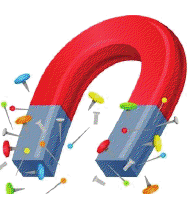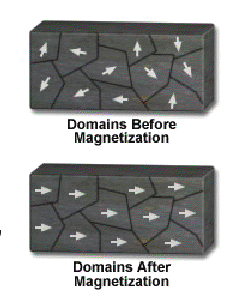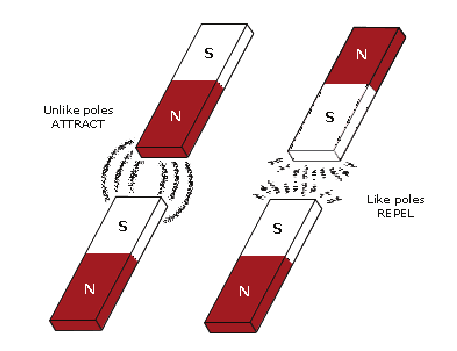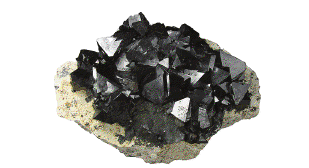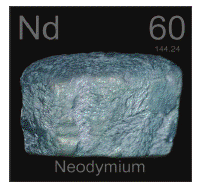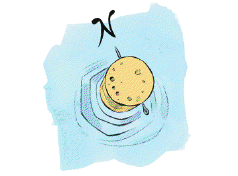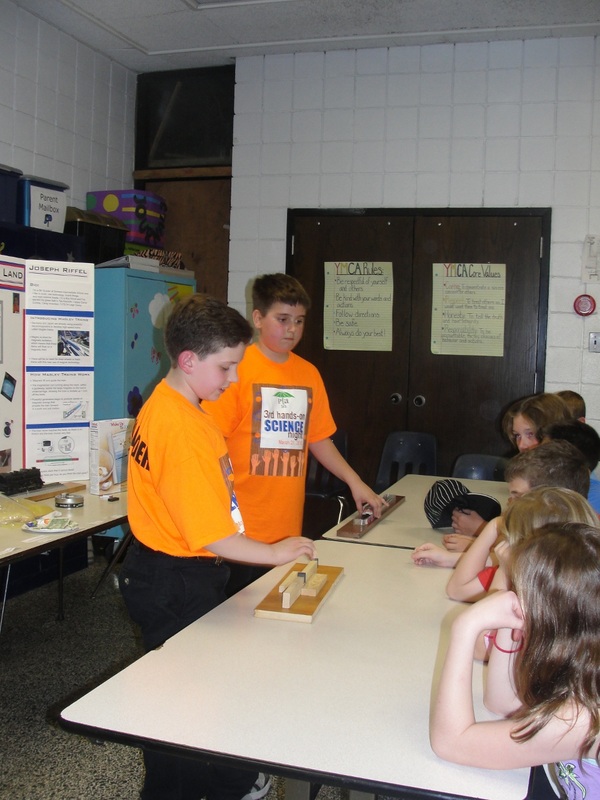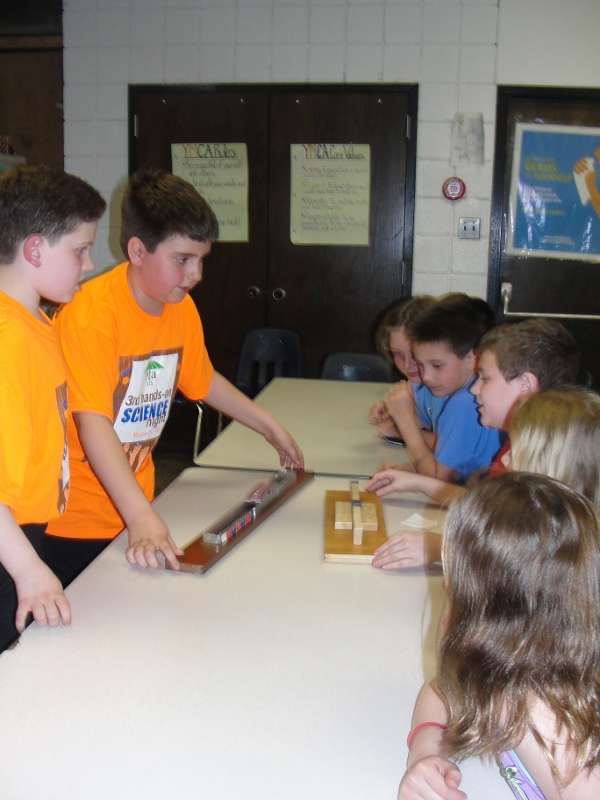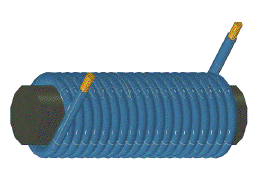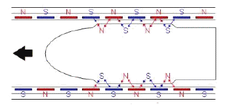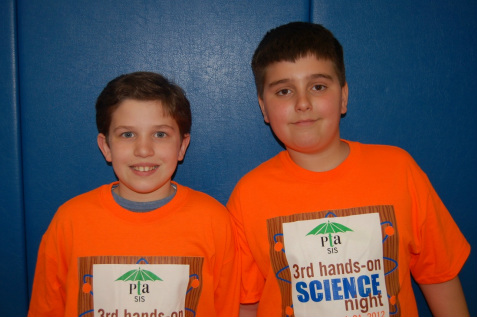Magnetic Levitation Train
Question: How Maglev Trains work?
Germany, Japan, & China are already using powerful electromagnets to develop high speed trains called Maglev trains.
There will be no need for steel wheels, tracks, or an engine. Maglev is short for magnetic levitation, which means that these trains will float on a magnetic field. The train never touches the guideway , so there is no friction and the train moves very fast. Manufacturers claim that it cannot derail.
There will be no need for steel wheels, tracks, or an engine. Maglev is short for magnetic levitation, which means that these trains will float on a magnetic field. The train never touches the guideway , so there is no friction and the train moves very fast. Manufacturers claim that it cannot derail.
What are Magnets?All metals are made up of billions of tiny atoms which act like tiny magnets and form groups called magnetic domains or magnetic moments.
In most metals the magnetic domains are mixed up and this cancels each other out and are not magnetic like aluminum and magnesium. Others like Iron, cobalt, and nickel line up neatly and create a magnetic field.
Magnets have all the magnetic domains pointing in the same direction creating a north pole and a south pole. Opposite poles attract and like poles repel. |
Fun Facts about MagnetsThe oldest-known magnetic substance is magnetite or
ferrous-ferric oxide Fe3 O4 . Neodymium magnets arethe strongest in the world.
A magnet can pull the iron out of your breakfast cereal!
Rub a needle with a magnet and stick it in a cork or wax paper and float it to create a simple Compass!
|
The Science Behind it :
Electromagnetism
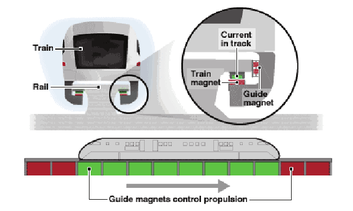
Electro Magnetic System:
1) Large electrical power source.
2) Metal coils line the guideway.
3) Large guidance magnets attached underneath the train.
An electromagnet has a wire around a ferromagnetic (Iron) core. When an electric current is passed through the wire it becomes a magnet. The magnets are temporary and
can be controlled by the electric source.
The electric current in the coils alternate the polarity creating attraction and repulsion which moves the train forward (Push-Pull).
1) Large electrical power source.
2) Metal coils line the guideway.
3) Large guidance magnets attached underneath the train.
An electromagnet has a wire around a ferromagnetic (Iron) core. When an electric current is passed through the wire it becomes a magnet. The magnets are temporary and
can be controlled by the electric source.
The electric current in the coils alternate the polarity creating attraction and repulsion which moves the train forward (Push-Pull).
Levitation and Propulsion
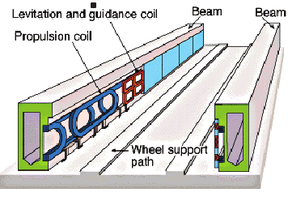
Magnets lift and guide the train. The magnetized coil running along the track, called a guideway, repels the large magnets on the train's undercarriage, allowing the train to levitate between 0.39 and 3.93 inches off the track.
Powerful generators begin to produce waves of magnetic energy that propels the train forward in a push and pull motion.
How many miles per hour do you think the train goes?
Powerful generators begin to produce waves of magnetic energy that propels the train forward in a push and pull motion.
How many miles per hour do you think the train goes?
Pros
|
Cons
|
Resources
- University of Cambridge- Library of Ferromagnetic Material & Types of Magnetism. http://www.doitpoms.ac.uk/tlplib/ferromagnetic/types.php
- BrainPOP - www.brainpop.com
- Magnets, Elecromagnets, Maglev Trains, MRI - www.wikipedia.org
- “How Maglev Trains Work” HowStuffWorks.com (a Discovery company) - http://science.howstuffworks.com/transport/engines-equipment/maglev-train.htm
- Maglev Trains - http://www.maglev.net/
- North American Maglev Transport Institute - http://namti.org
- “Levitating magnets: Floating Isn’t Just for Magicians” -www.sciencebuddies.org
- “Maglev Trains- How Do They Work” - www.buzzle.com
- “How Magnets Work” - www.kidsgen.com
- “Building a Maglev train” - www.dicoverthis.com
- “Types of Magnetism” http://www.worsleyschool.net/science/files/magnet/types/ofmagnetism.html
About RyanI’m a 5th Grader at Somers Intermediate School and a
Davidson Young Scholar. I love Destination Imagination, taking classes at Montclair State University’s G & T Youth Program, SIG, science, building things, books, museums, Camp Combe, and vacations! |
About Joseph
I’m a 5th Grader at Somers Intermediate School and I
like to build, use technology, invent things, and read science books. I’m a Boy Scout and I’ve earned my green belt in Tae Kwondo. I enjoy Camp Combe, Camp Invention and Y-Tech Lego Camp. |

